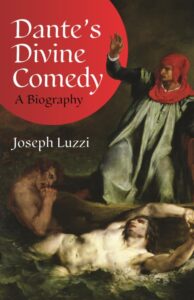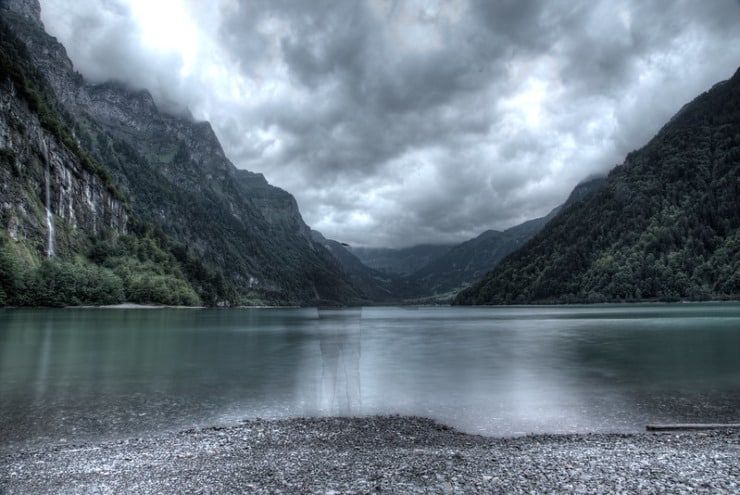
Joseph Luzzi considers the history of Dante’s great poetic work
I first read The Divine Comedy by Dante Alighieri (1265-1321) in 1977. I read a translation by American poet and translator John Ciardi (I still have the book), who had undertaken the work from 1954 to 1970. He used Dante’s terza rima form, an arrangement of tercets or three-line stanzas with an interlocking rhyming scheme. Ciardi’s translation is considered defective today (who knew?), but it’s still widely read.
The Divine Comedy has been translated into English alone scores of times since 1782. Some translators attempt the terza rima form; others choose blank verse, prose, quatrains, six-line stanzas, irregular rhyme, and just about every other imaginable form. The first complete American translation, one still read today, was by none other than Henry Wadsworth Longfellow in 1867, who is credited with initiating a kind of American renaissance of Dante that continues today. (Longfellow employed blank tercets, if you want to know.) In fact, more translations of The Divine Comedy exist in English than in any other language.

And it is a great story.
Dante wrote the poem in his native Tuscan language, not Latin, during his exile from Florence. If that were not unsettling enough for the Church, it’s clear that he told a story that was as much religious as it was poetic, Luzzi writes. And Dante chose the pagan poet Virgil to be his guide. It was no surprise that the work often found itself on a list of books officially banned.
Luzzi explains how the epic poem helped invent Italian literature (and the question of whether Dante or Petrarch was the “father of the Renaissance”), and how it influenced both Geoffrey Chaucer, who wrote another kind of pilgrimage story, and eventually John Milton, who composed his own epic of Paradise Lost and Paradise Regained. The Divine Comedy was embraced by the Renaissance but almost forgotten (or ignored) by the Enlightenment. Its “rediscovery” by the Romantics, like Percy Bysshe Shelley, led to its embrace by that movement and the Victorians. One might have thought it would have been rejected once again by the Modernists, but as Luzzi points out, the poem’s influence extended to such poets and writers as T.S. Eliot, W.H. Auden, William Butler Yeats, and James Joyce.

Joseph Luzzi
After reading Dante’s Divine Comedy and finding myself rather taken with Luzzi’s story, I would agree that The Divine Comedy is likely the most influential work in world literature after the Bible.
Luzzi previously published Romantic Europe and the Ghost of Italy (2008), A Cinema of Poetry: The Aesthetics of the Italian Art Film (2014), My Two Italies (2014), In a Dark Wood: What Dante Taught Me About Grief, Healing, and the Mysteries of Love (2015), and Botticelli’s Secret: The Lost Drawings and the Rediscovery of the Renaissance (2022). He received his Ph.D. degree from Yale University, and he teaches literature, film, and Italian Studies at Bard College. He is also the founder of the Virtual Book Club, which focuses on the world’s greatest books and the power of storytelling.
Dante’s Divine Comedy is a gem of a story, a poem’s biography that’s both accessible and scholarly. That’s not the easiest combination to pull off, but Luzzi does it, and does it well.
Related:
Poets and Poems: Angela Alaimo O’Donnell and Dear Dante
Boccaccio, Petrarch, and the Invention of “Dante” – a lecture by Joseph Luzzi
Photo by Wendelin Jacober, Creative Commons, via Flickr. Post by Glynn Young.
How to Read a Poem uses images like the mouse, the hive, the switch (from the Billy Collins poem)—to guide readers into new ways of understanding poems. Anthology included.
“I require all our incoming poetry students—in the MFA I direct—to buy and read this book.”
—Jeanetta Calhoun Mish
- “Your Accent! You Can’t Be from New Orleans!” - October 9, 2025
- Poets and Poems: Donna Vorreyer and “Unrivered” - October 7, 2025
- Poet Sidney Lanier and the Lost Cause - October 2, 2025


Leave a Reply